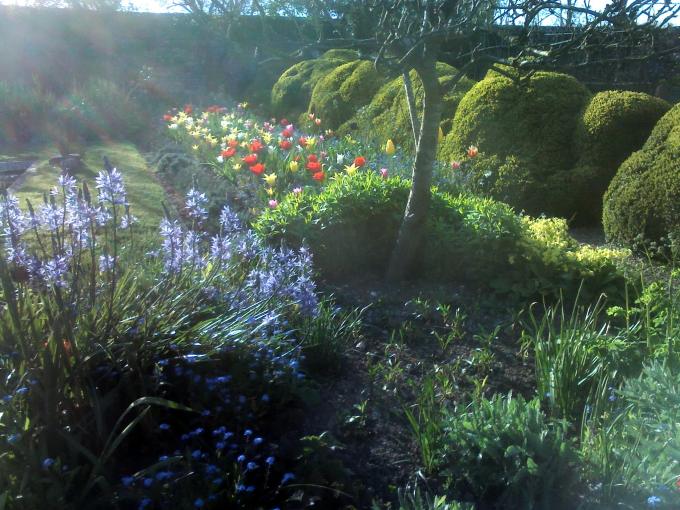Another sun-soaked day in the garden. Even more tulips have come into bloom.
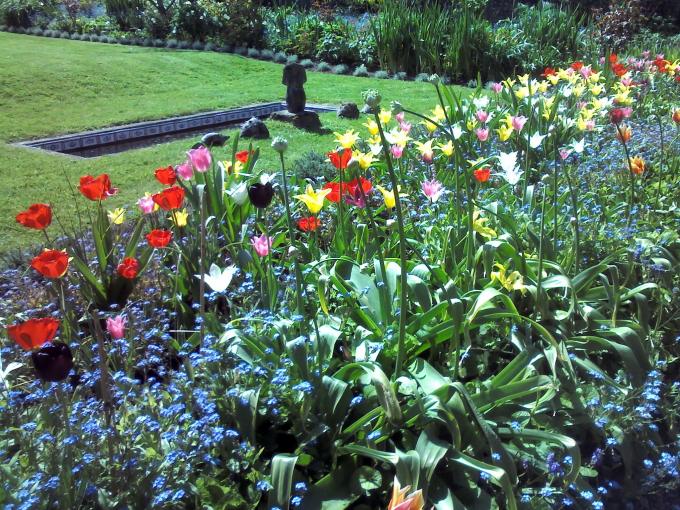
In the central bed behind the pond are Tulipa “Queen of the night” (almost black), “Apeldoorn” (brilliant red), West Point” (yellow) and “White Triumph”.
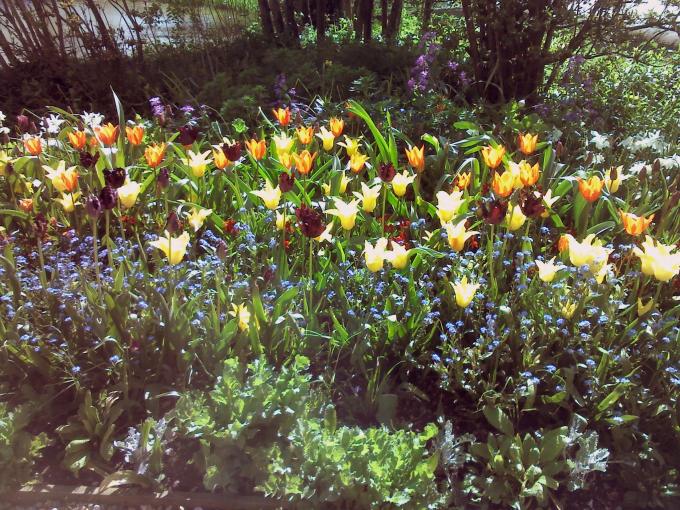
In this bed opposite the front door to the house are more “West Point” amongst “Blue Amiable” (purple), “Black Parrot” (deep maroon) and “Ballerina” (orange).
I begin my day with some maintenance tasks. First I wash the outside of the greenhouse so that it can receive a new coat of whitewash. Then Mark and I clean the filter of the water feature by the patio, allowing it to run again, and reset the timer so that it might need cleaning less frequently.
My next job is to plant some primroses (Primula vulgaris) in an empty patch by the entrance to the garden.

These are the same primroses I divided and potted up on my first day.
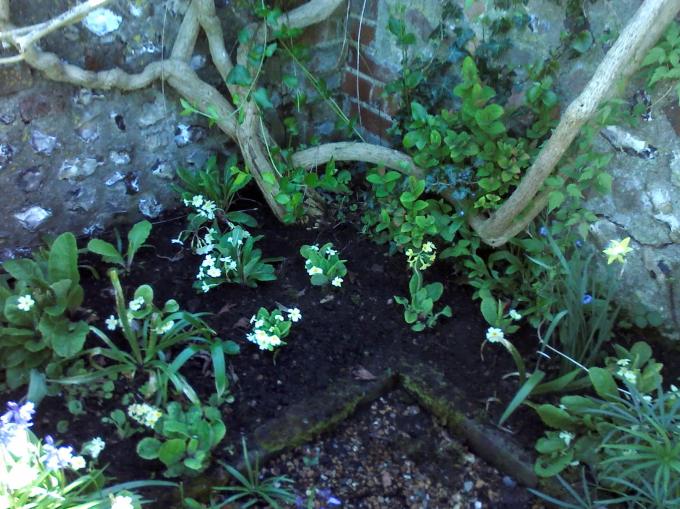
On the approach to Charleston House there is a low wall, beyond which lies the pond. Recently a tree stump has been removed and now there is a bare patch of earth. Mark asks me to plant some late-blooming daffodils here, Narcissus poeticus.
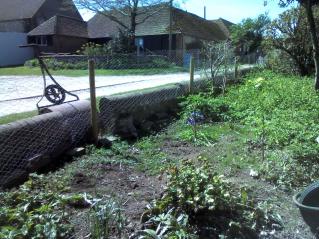
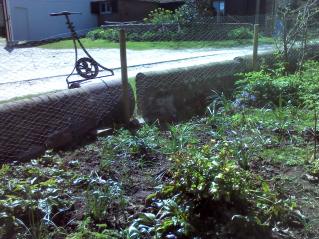

I thought all the daffodil flowers had been and gone so it’s nice to know that we can enjoy them for a month or so more.
It turns out to be quite a varied day, as after lunch I’m set to work on yet another part of the garden, the vegetable patch. There are three raised beds to weed, including removing some of last year’s crops that have self-seeded or been left behind. There is lots of curled and flat-leaf parsley (Petroselinum crispum). This has just gone past its best so is only any good for adding to soup or the compost bin. I dig out some self-seeded hollyhock (Alcea rosea) and foxgloves (Digitalis purpurea) to be replanted elsewhere in the garden. Mark explains the importance of keeping the soil around the roots (the root ball) intact when transplanting to ensure the plants’ survival. By removing the soil the fine roots are lost and subsequently the plant will struggle to take up any water and die. Some very small carrots (Daucus carota ssp. sativus) and potatoes (Solanum tuberosum) are bound for the compost heap but Mark asks me to leave the few parsnip (Pastinaca sativa) and leek (Allium ampeloprasum) plants to flower as they will add interest. An Aquilegia and poppy (Papaver) plant also escape the compost heap.
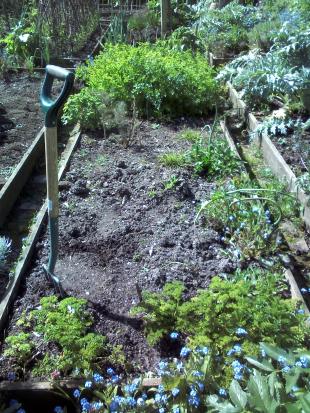
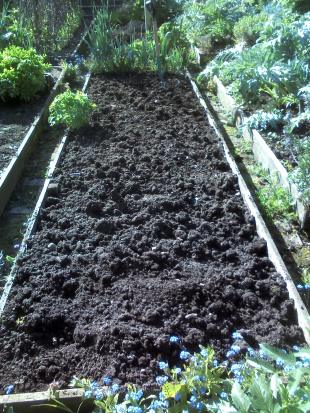
It is time to go home. I can’t resist taking a few more pictures as the low sun streaks across the garden making everything glow. The box hedge and the blue Camassia esculenta look stunning in the golden light.
